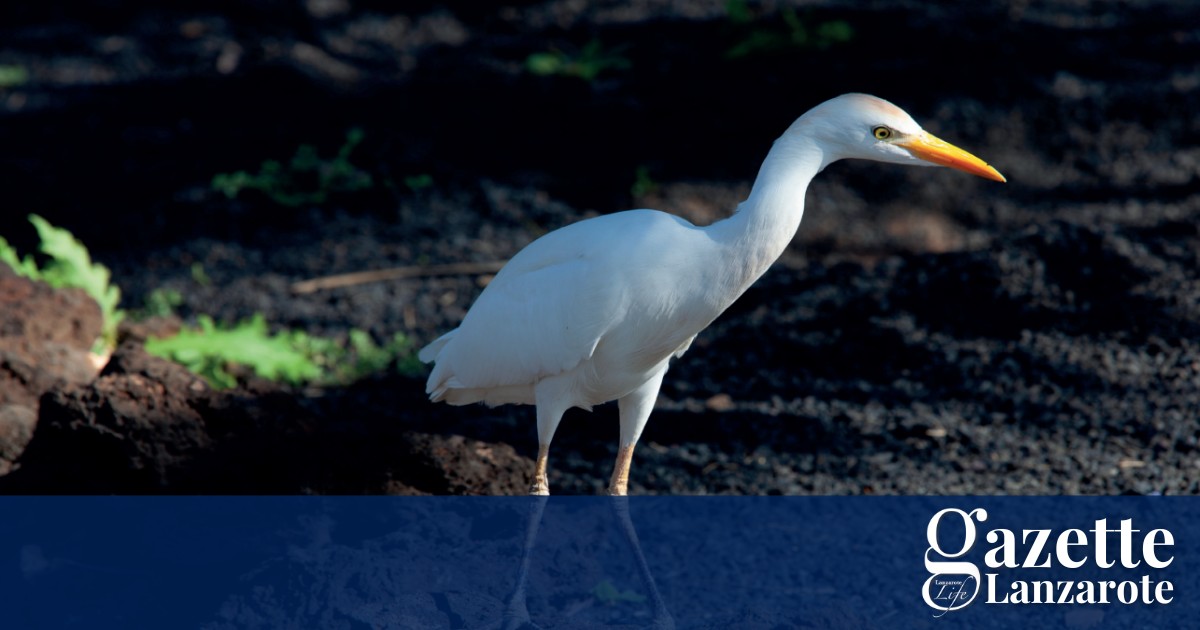Egrets are now a common sight on Lanzarote, but if you’d asked a few decades ago, locals may have replied “Egrets? We’ve had a few, but then again, too few to mention.”
That’s because the elegant white birds have only been breeding on the island for a few decades. In the 1980s, an egret arrived on Arrecife’s seafront, apparently sick and way off course. The owner of a local kiosk cared for it and it remained in the Parque Ramirez Cerda until another egret arrived. The couple first made a nest and bred in 1988.
The initial couple soon multiplied, leading to substantial colony of egrets on Lanzarote – the only one of the Canary Islands where the bird is resident. By the mid-1990s, 400 birds were counted on the island and numbers have remained high ever since, occasionally reaching around 1,500.
Lanzarote isn’t the only place that has seen a booming egret population, however. The bird has colonised the Caribbean and North America within the last 100 years and now breeds in the southern United Kingdom and Ireland, too.
Most egrets you see on Lanzarote are cattle egrets, identifiable by their yellow beak, pale legs and occasional shaggy crest. They are wading birds, usually found close to shallow water, although cattle egrets are more likely to occupy farmland than other egrets.
SHIFTING THE EGRETS
For many years, Lanzarote’s egrets formed a large, noisy colony in the Parque Ramirez Cerda, on Arrecife’s seafront. But the permanent mess from their dropping and feathers, which made park benches impossible to sit on and caused a health hazard, led to the Ayuntamiento attempting to get rid of the birds.
This turned out to be an almost farcical tale, as the birds overcame all attempts to get rid of them. First, scarecrows were placed in the trees, but the egrets were soon seen perching alongside them, entirely unbothered.
Real and dummy birds of prey also failed to shift the birds, and they managed to ignore metal spikes that were placed on branches to prevent them roosting.
Finally, in 2009, the colony was removed and taken to a specially prepared wooded area of acacia trees near the Cabildo building and bus interchange. Nevertheless, they returned and Arrecife finally cut all the branches off its handsome trees altogether, before felling most of them.
The colony near the Cabildo remains resident, fenced off for the birds’ protection, but authorities have often been criticised for not clearing it of bird excrement, feathers and dead egrets.
The rapid rise of a non-native bird species has led to concern on the island. Some farmers worry that the egrets could spread disease among livestock, although there is no evidence supporting this theory. Meanwhile, ecologists worry that the egrets may compete with local species, leading to reduced population numbers. This also remains to be proven.
Egrets are also predators. On Lanzarote, they live mainly on lizards and crickets, but they will also take small rodents, and the chicks and eggs of other birds. This makes them a threat to endangered species such as the Canarian skink, the Canarian shrew, various plover species and the Cream-Coloured Courser. Nevertheless, the egret remains a protected species on Lanzarote, and the breeding population here remains unique.











Leave a Reply
Want to join the discussion?Feel free to contribute!